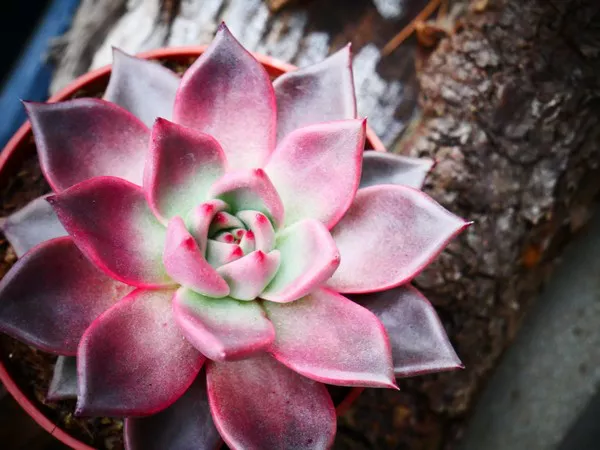Succulents have taken the gardening world by storm with their unique appearance and remarkable adaptability. These water-storing plants have an innate ability to flourish in arid conditions, making them popular choices for both indoor and outdoor gardens. While succulents can thrive on their own, the art of companion planting offers an opportunity to elevate your gardening game. In this comprehensive guide, we explore the world of succulent companion plants, their benefits, and how to create harmonious plant pairings for stunning and thriving landscapes.
Succulents: A Brief Overview
Before we delve into the world of companion plants, let’s familiarize ourselves with the basics of succulents. Succulents are a diverse group of plants that store water in their leaves, stems, or roots. This water-storage ability allows them to survive in dry, arid environments where other plants struggle. From the iconic aloe vera to the whimsical echeverias, succulents come in a myriad of shapes, sizes, and colors, making them a versatile addition to any garden.
The Benefits of Companion Planting with Succulents
Companion planting involves strategically placing different plant species in close proximity to one another to create a symbiotic relationship. When it comes to succulents, companion planting offers several benefits:
1. Water Regulation: Certain companion plants can provide shade and help regulate soil moisture, which is beneficial for succulents that may need some protection from intense sunlight and require well-draining soil.
2. Aesthetic Appeal: Pairing succulents with complementary companion plants can enhance the visual appeal of your garden by introducing contrasting textures, colors, and heights.
3. Pest Control: Some companion plants have natural pest-repellent properties that can help protect succulents from common garden pests, promoting overall plant health.
4. Soil Enrichment: Certain companion plants, such as nitrogen-fixing legumes, can enrich the soil with essential nutrients, creating a more favorable environment for succulent growth.
Selecting Suitable Companion Plants for Succulents
When selecting companion plants for your succulents, consider the following factors to ensure a harmonious partnership:
1. Sunlight Requirements: Choose companion plants that have similar sunlight requirements to your succulents. Most succulents thrive in bright, indirect light, so look for shade-loving plants that can provide a bit of protection.
2. Watering Needs: Opt for companion plants with similar water needs or those that won’t compete excessively for moisture. Succulents prefer infrequent watering, so selecting drought-tolerant companions is essential.
3. Soil Type: Consider the soil preferences of both your succulents and companion plants. Aim for well-draining soil that prevents waterlogging, as overly wet conditions can be detrimental to succulents.
4. Aesthetic Compatibility: Choose companion plants that enhance the overall look of your succulent garden. This could involve selecting plants with contrasting leaf shapes, colors, or sizes to create a visually engaging landscape.
Complementary Companion Plants for Succulents
1. Lavender: Known for its calming fragrance and vibrant purple flowers, lavender is an excellent companion for succulents. It thrives in well-draining soil and complements the architectural beauty of succulent rosettes.
2. Agave: Pairing different succulent species together can create a dynamic and visually appealing garden. Agaves, with their striking shapes and textures, complement other succulents like echeverias and sedums.
3. Sage: Sage is a fragrant herb that requires minimal water and enjoys similar sunny conditions as most succulents. Its silvery-gray foliage contrasts well with the vibrant greens and blues of succulent leaves.
4. Stonecrop: Stonecrop (sedum) is a low-growing succulent that forms a colorful carpet of foliage. It complements taller succulent varieties and is an excellent choice for ground cover.
5. Rosemary: Rosemary’s drought tolerance and distinctive aroma make it a fantastic companion for succulents. Its upright growth habit can add vertical interest to your garden.
6. Ice Plant: Ice plants are succulents with vibrant, daisy-like flowers that come in an array of colors. They pair well with other succulents and can create a striking color contrast.
Creating Your Succulent Companion Garden
To create a successful succulent companion garden, follow these steps:
1. Research: Thoroughly research the specific care requirements of your chosen succulents and companion plants to ensure they are compatible.
2. Plan Layout: Sketch out a garden layout that takes into account factors like sunlight exposure, water distribution, and aesthetic design.
3. Prepare Soil: Create well-draining soil by adding sand, perlite, or gravel to your planting area. This will prevent water accumulation and root rot.
4. Planting: Space your succulents and companion plants appropriately, allowing for growth and airflow. Consider using containers or raised beds for better control over soil conditions.
5. Maintenance: Regularly monitor your garden for signs of overgrowth, disease, or pests. Prune plants as needed to maintain their appearance and health.
Conclusion
The art of companion planting opens up a world of possibilities for creating stunning and thriving gardens. Pairing succulents with carefully chosen companion plants not only enhances their beauty but also promotes their well-being. Whether you’re aiming for an ornate outdoor display or an elegant indoor arrangement, the synergy between succulents and their companions can lead to a garden that’s not only aesthetically pleasing but also ecologically balanced. As you experiment with different combinations, you’ll find that the interplay between textures, colors, and growth habits can create a truly enchanting landscape.


